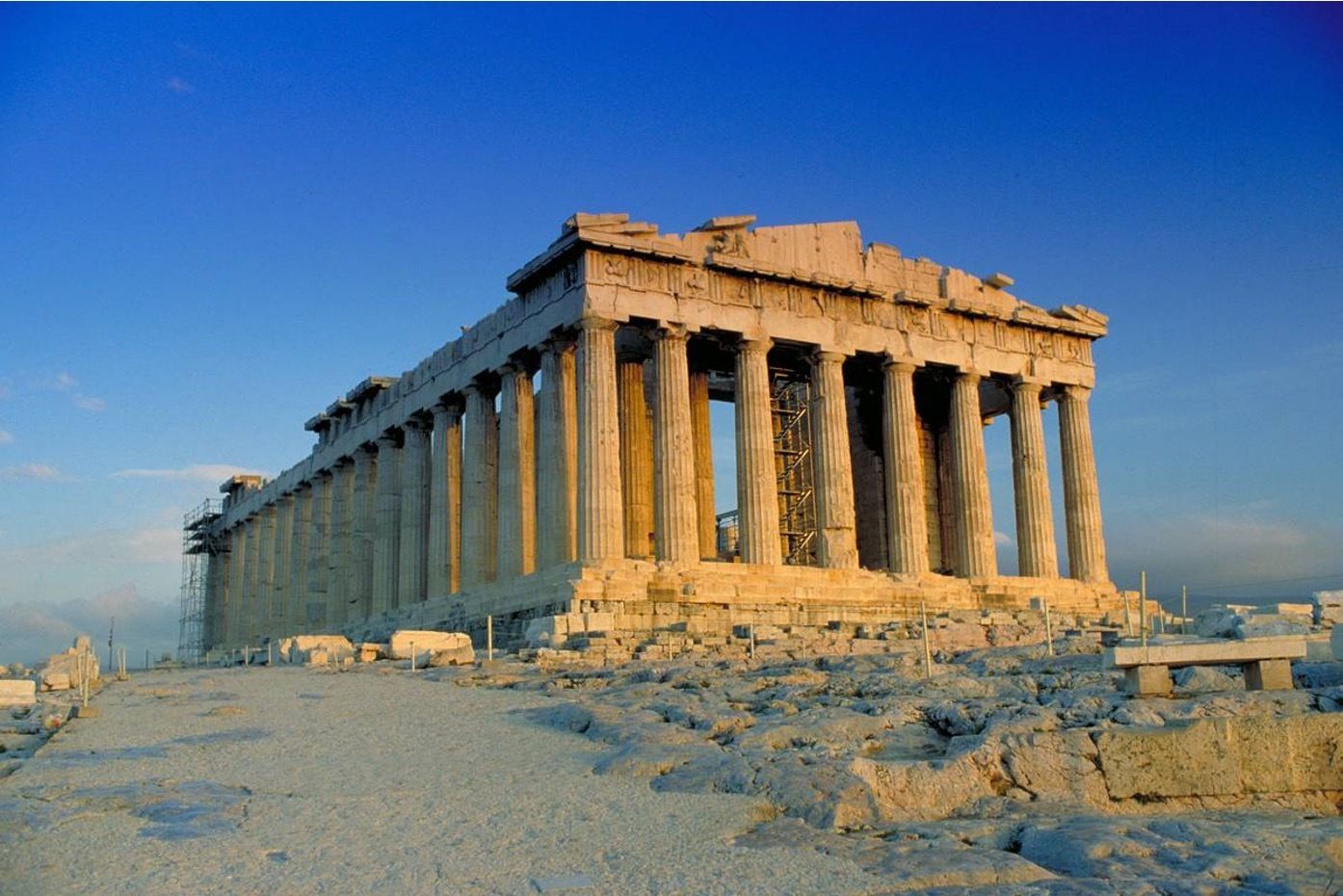Identifying Info:
Architects: Iktinos and Kallikrates
The sculpture program was overseen by Phidias.
447-432 B.C.E.
High classical Greek architecture
Big Picture Ideas:
Hallmarks of the classical period: Balance, order, and symmetry
Monumentality, exclusivity, imposing
Democracy - restricted form of democracy
Beacon of trust
Primarily, a “doric” temple but with “ionic” elements.
Topography: The Parthenon is located on the Acropolis. The hill was the Acropolis, and the Parthenon was on top of it. Back in that time, the Acropolis was in a higher elevation than the rest of Athenian neighborhood or society. This indicated that the Parthenon was way above from the regular life of regular Athenian citizens.
Dual Purpose: The Parthenon functioned as both a temple and a treasury in ancient Athens. Architecturally and symbolically, it was built as a temple dedicated to Athena Parthenos, the city's patron goddess. At the same time, the Parthenon also played a crucial financial role, housing the treasures of the Delian League and serving as the city’s main treasury.
The entire Parthenon, except its foundations, was constructed with Pentelic marble.
The original Parthenon was polychrome. Traces of color have been found. However, it is now monochrome - white marble.
Optical refinements were used in the Parthenon to correct for visual distortions that naturally occur when humans view large, geometric structures from a distance or at certain angles. Ancient Greek architects realized that perfectly straight lines and uniform proportions would not appear perfect to the human eye.
Three Optical Refinements: Entasis, Inclination, and Curvature.
Entasis: The slight convexity in the taper of the columns.
Inclination: The columns incline or tilt inwards and taper in a gradual curve, not in a straight line.
Curvature: All horizontal lines are slightly curved. None are straight. This was done for logistical reasons. Curvature allows the Parthenon to effectively handle the rainwater - drainage of rainwater → helping to direct water away from its interior.
The ancient Greeks cared about math. The canonical formula used for Greek temples is 2x + 1. The Parthenon has 8 columns (short sides) and 17 columns (long sides).
Intergenerational Conflict between the Greeks and Persians
This is not the first Parthenon. It was destroyed by the Persians and other invaders several times and rebuilt multiple times.
The Parthenon is also a symbol of strong Athenian identity as a city state which is very distinct from the Greek identity.
The Parthenon was used differently in different period under different rules. Parthenon’s usage depended on who was in power. The Byzantine empire converted the Parthenon into a church. Ottomans converted it into a mosque. Some parts of the Parthenon are now at the British museum.
Metope → Centauromachy → Mythic battle → Greeks vs Persians + Idealized naturalism
Pediments
Parthenon’s lingering classical legacy of democracy is now seen in modern buildings, including Columbia’s campus.

